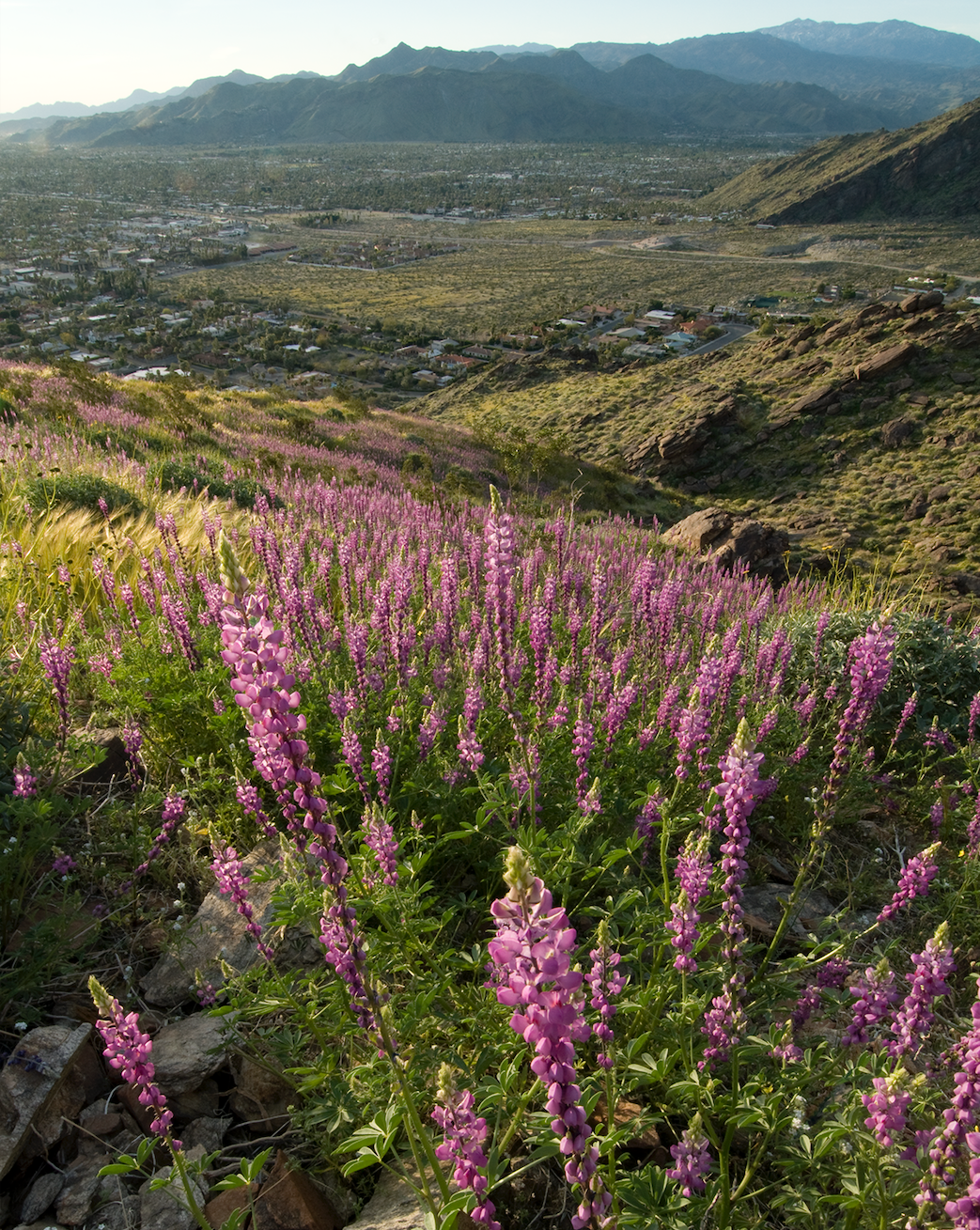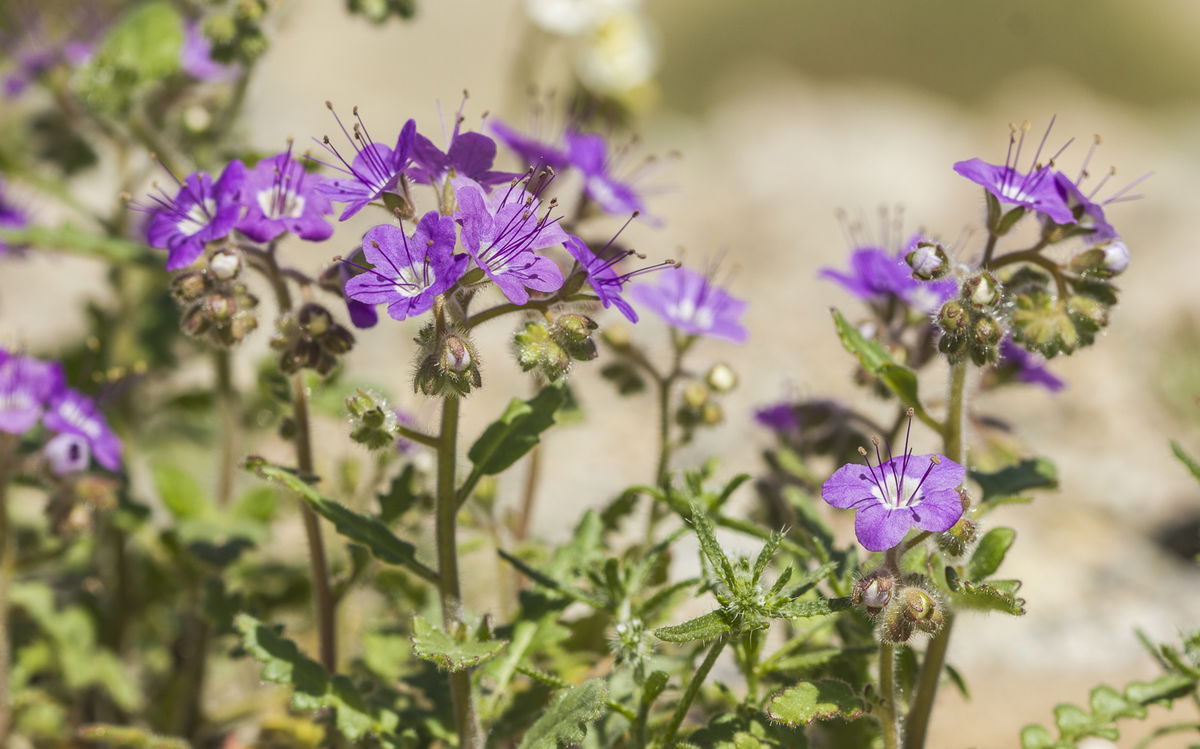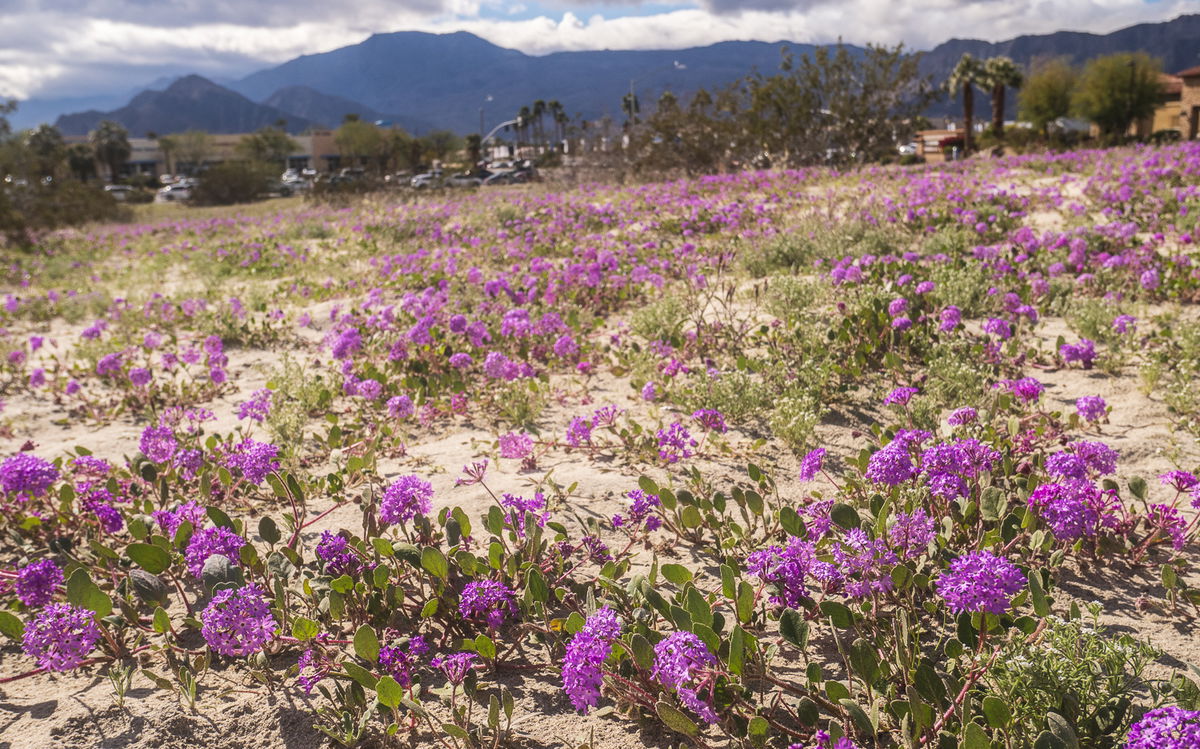Will winter rains bring a spring ‘Super Bloom’ to the desert? We asked wildflower experts.
Southern California has gotten a fair amount of rain this year but has it been enough to see a super bloom here in the Coachella Valley?
Experts say that a super bloom, or the swift and fragile development of native wildflowers, has the best likelihood to develop after a series of well-spaced rainfall over the course of the fall and winter seasons.
According to the author of Wildflowers of the Coachella Valley, James W. Cornett, recent local storms, “... brought over 2.8 inches of rain to the desert slopes of the mountains bordering the western edges of the Coachella Valley.” This means nature lovers could expect colorful wildflower displays in the Palm Springs Area, specifically near the Indian Canyons Tribal Park and Lykken Trail by mid-February.
Here is a photo of Arizona Lupine along Lykken Trail that are predicted to bloom again this year.

However, for a super bloom to paint the valley, an additional boost of moisture in needed at the beginning of the spring season.
“You really need early rain, as much as you need a rain in the middle part of the season, and maybe a little bit toward as the spring is coming along to really keep those native wildflowers germinating and growing,” Nick Jensen, PhD, California Native Plant Society.
The fickle phenomenon needs more than just water to flourish in the spring. Warm conditions, a lack of harsh, dry wind and competition from non-native plants is needed for a super bloom to occur.
“Sahara mustard and fountain grass, and there's a new one coming into the Coachella Valley, called Cape ricegrass, which can just cover the hillsides and start to out compete a lot of the native wildflowers,” Colin Barrows, Naturalist and Desert Advocate.
Though a super bloom is not guaranteed, experts say that the photo-worthy super bloom could happen this year if the right conditions present themselves.
The colorful burst of native wildflowers varies based upon the year’s seed bank. Here are some of the flowers you could see this year:
Emory's Rock Daisy, Perityle emoryi

Notch-leaf Scorpionweed, Phacelia crenulata

Desert Sand Verbena, Abronia villosa

If a super bloom does occur this year, experts welcome people to take in the beautiful view, however, they say it is best to do so from a distance.
“When you get people visiting, they can sort of love it to death...if people are like trampling all over it, then that sometimes once in a lifetime opportunity to see these flowers and for the flowers themselves to reproduce and be existing in the future can be lost,” Colin Barrows, Naturalist and Desert Advocate.
Do you have incredible wildflower photos to share? Send to SHARE@KESQ.COM.





